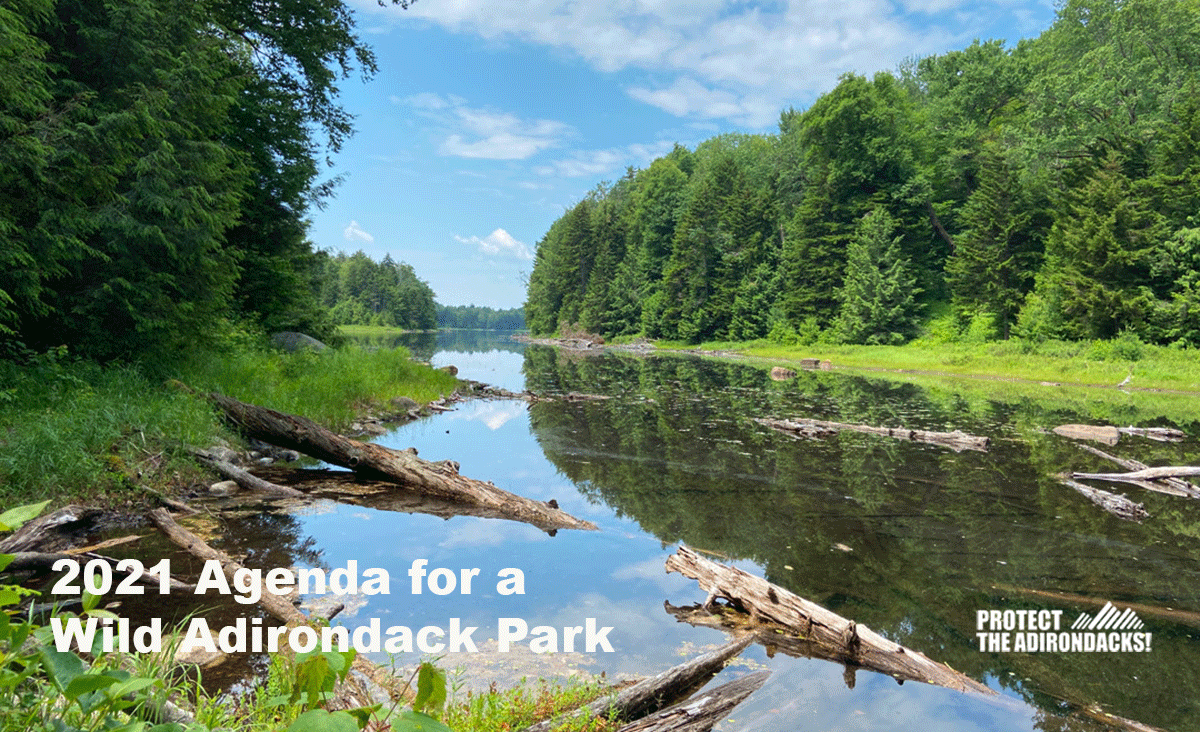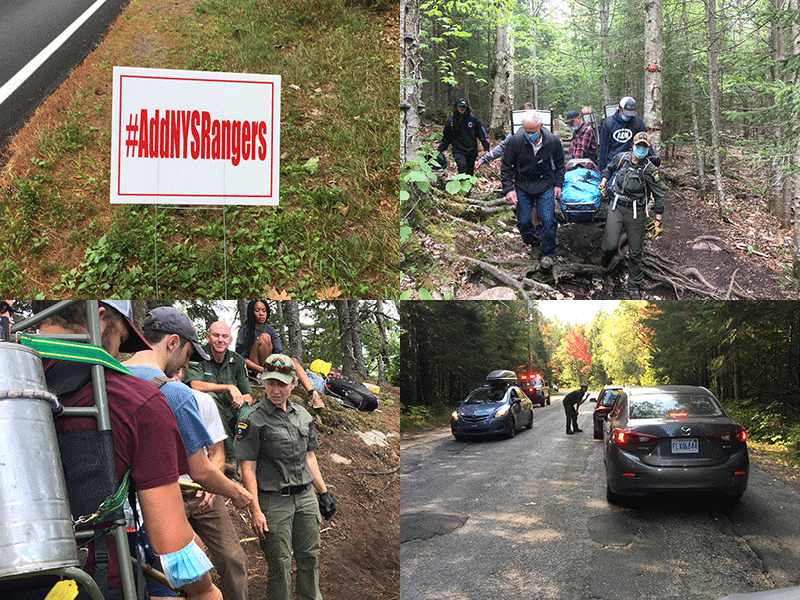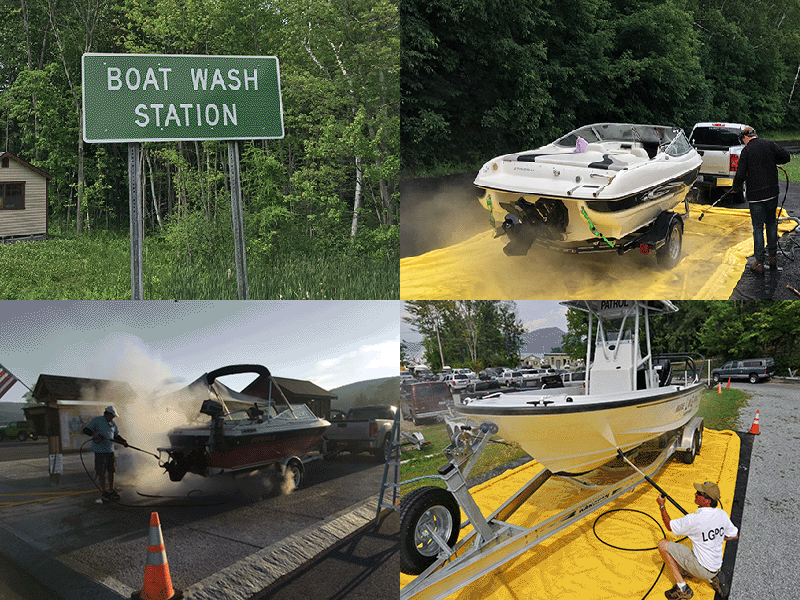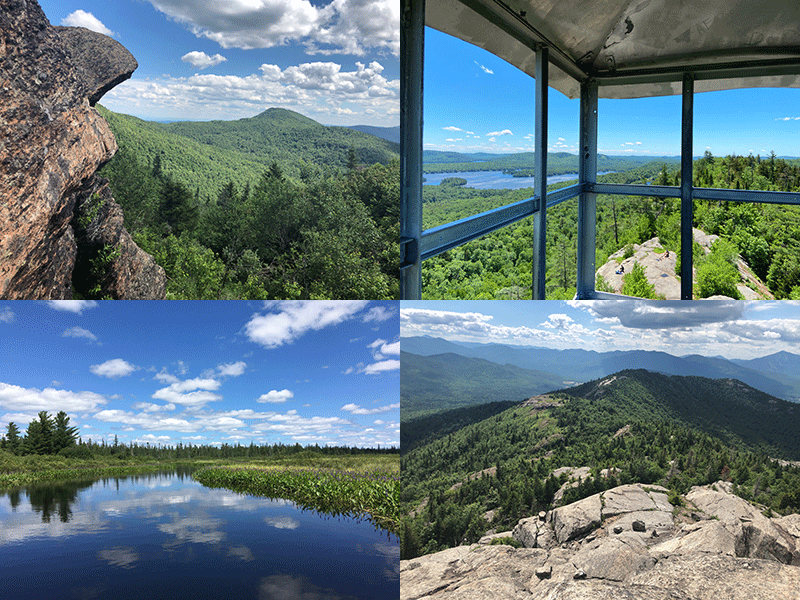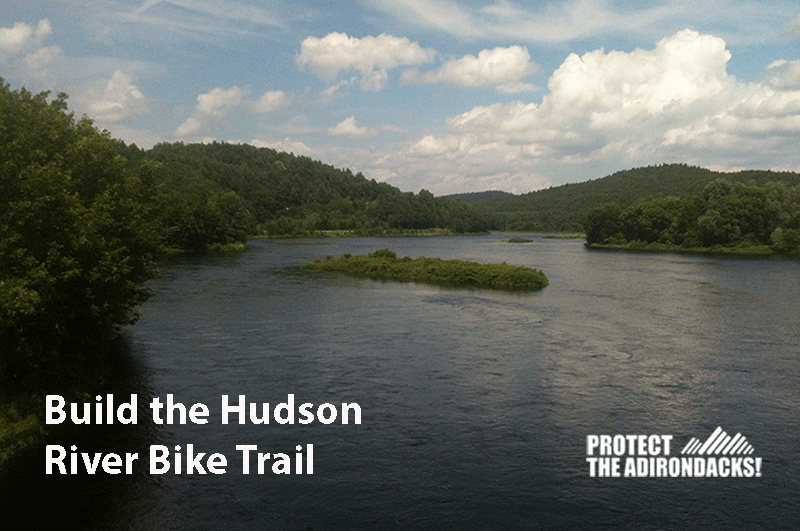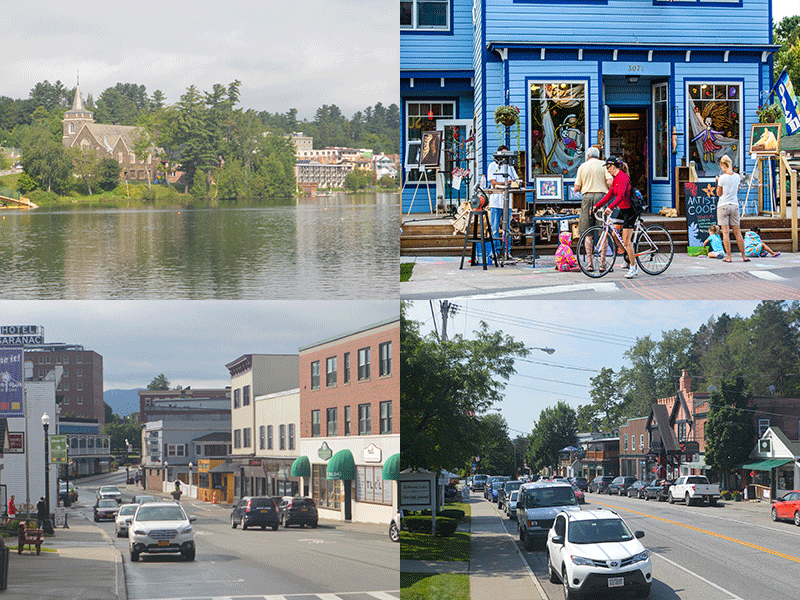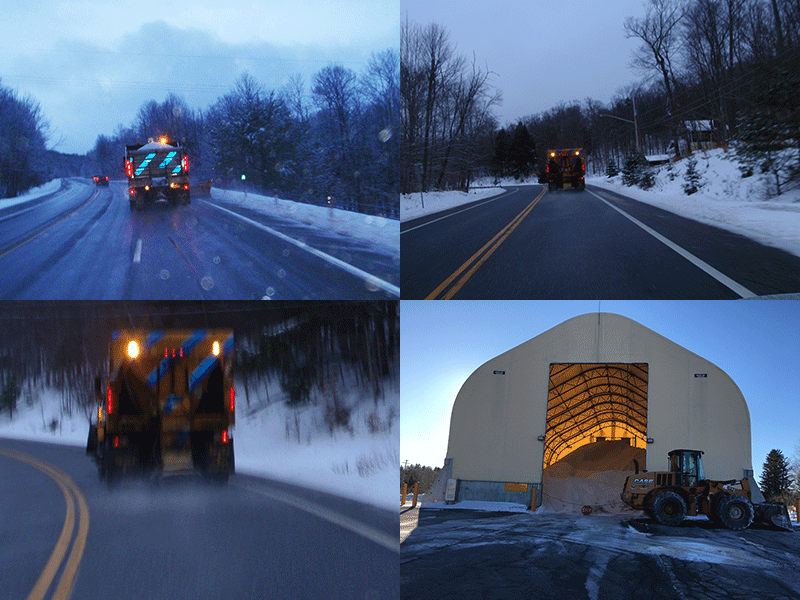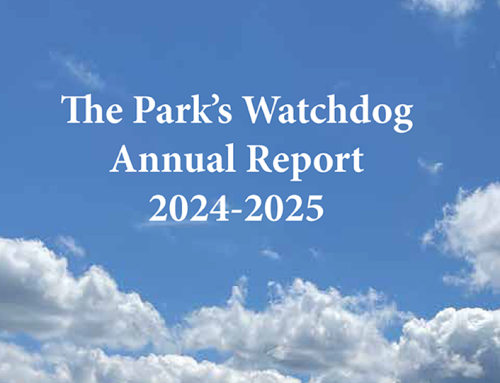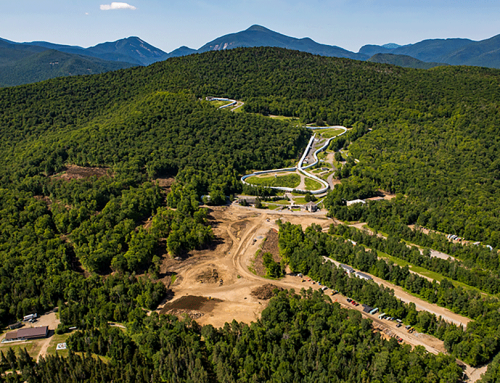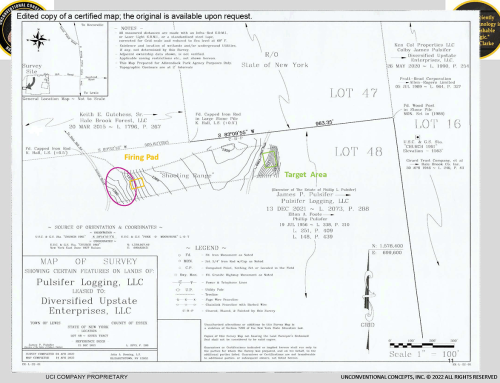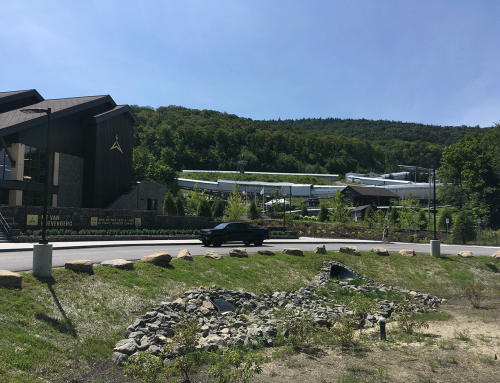The COVID19 pandemic changed the nature of Adirondack Park environmental advocacy work in 2020. Like a lot of American life, the pandemic changed things in Adirondacks, depressing many businesses while catalyzing an explosion of public outdoor recreation on the Forest Preserve. Protect the Adirondacks has organized and is implementing a 2021 Agenda for a Wild Adirondack Park that aims to strengthen protections for the waters and woodlands of the Adirondack Park, improve the management of the People’s Land — our public Forest Preserve — protect vital lands threatened with development and sale, all while working to improve the quality of life and economy in local communities. This is all work that in one way or another, Protect the Adirondacks has been doing since 1908. Our 2021 agenda combines advocacy, public education, research, grassroots organizing, and legal action.
There are many ways to volunteer with Protect the Adirondacks. Click here for membership information.
1. Save Whitney Park and the Protection of Open Space in the Adirondack Park
For more than 50 years, the 36,000-acre Whitney Park has been the top land protection priority in New York State. The tract is now for sale. The landowner says he’s selling for the top price and wants to make a deal soon. This land needs to be purchased by the State of New York and added to the public Forest Preserve. The Forest Preserve is the people’s land in New York, open and freely accessible to everybody. Whitney Park should be purchased by the state and added to the Forest Preserve.
Click here to sign a petition urging Andrew Cuomo to protect Whitney Park.
We need your help to save Whitney Park and protect and uphold the values of the public Forest Preserve. Please sign onto the petition below.
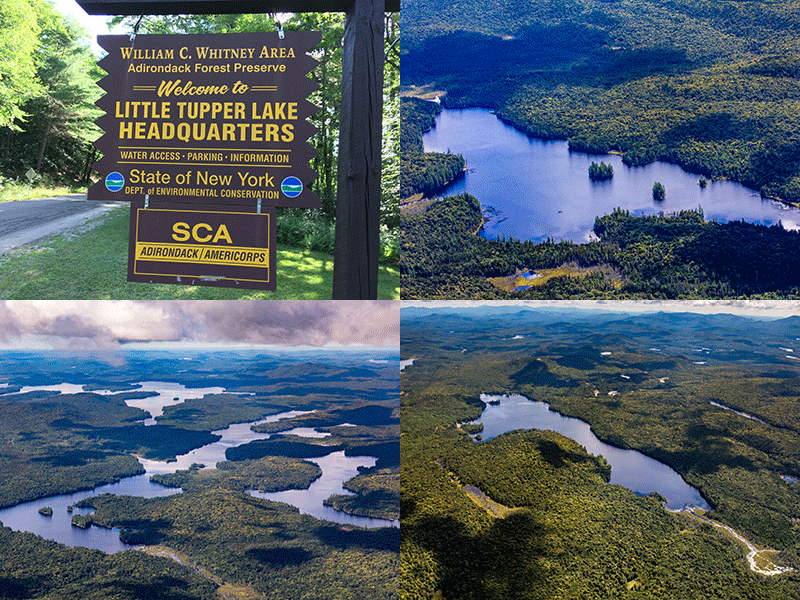
The 36,000-acre Whitney Park has 22 lakes and ponds and over 100 miles of undeveloped shoreline. In 1998, 15,000 of Whitney Park lands was sold to the state, which created the William C. Whitney Wilderness Area.
The 6-million-acre Adirondack Park in northern New York is a land of mountains, deep forests, wild rivers, and beautiful lake and ponds. The Adirondack Park is a mixture of public and private lands. The 2.6-million-acre public Forest Preserve is the heart and soul of the Adirondacks. It’s what makes the Adirondacks a special and an altogether different place from any other parts of the eastern U.S.
For years, the State of New York has purchased private lands from willing sellers within the Adirondack Park to add to the public Forest Preserve. Over the past 125 years, the “forever wild” Forest Preserve has grown and expanded through a multi-generational and bipartisan commitment to create a wild Adirondack Park as a place with abundant waters and woods that are accessible and available to everybody so that current and future generations are guaranteed the opportunity to experience wild nature. That is the dream of the Forest Preserve.
It’s critical for the future of the Adirondack Park that Whitney Park is protected and added to the public Forest Preserve. New York Governor Andrew Cuomo needs to hear from people across New York and beyond that we must save Whitney Park by making it part of the Forest Preserve.
The great open space landscape of the Adirondack Park is what sets the region apart from anywhere else east of the Mississippi River. There is no other places with such a grand unbroken forested landscape dotted with small communities as exists in the Adirondack Park. This protected landscape, the crown jewel of New York’s heritage and commitment to environmental protection over the last century, defines the Adirondack Park experience for residents and visitors alike.
We need to protect the 36,000-acre Whitney Park in 2021.
2. It’s Time to Build a Great Public Lands Management Program for the High Peaks Wilderness
In 2021, PROTECT will continue our longstanding work to reform the management of the HighPeaks Wilderness Area and associated Wilderness areas. These are the most popular Forest Preserve areas in the Adirondacks. These areas need a comprehensive management program to address overuse and damage to hiking trails. It is imperative that the state invest in building sustainable trails, public education, Rangers and other personnel, and in new facilities such as a High Peaks Information Center, safe parking lots and new trailheads. This is a major effort in 2020.
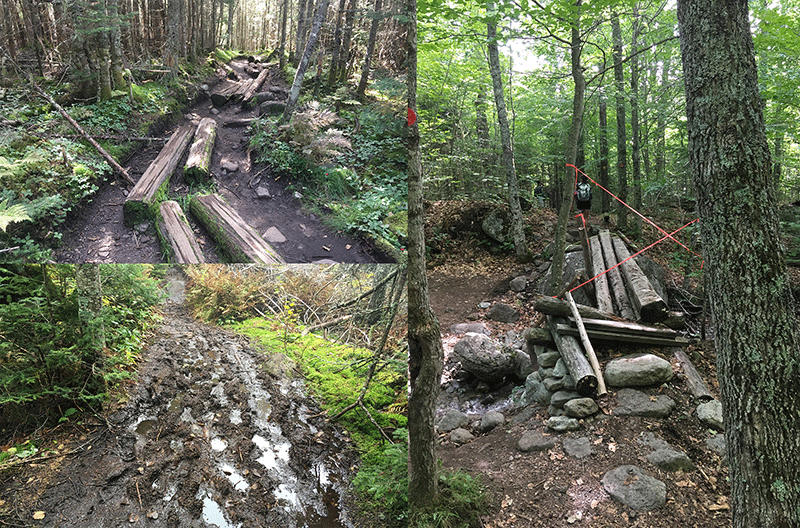
Most hiking trails in the High Peaks Wilderness suffer from over-use, poor design, and poor maintenance. The hiking trails of the High Peaks Wilderness require a major investment by the State of New York.
The 3-million-acre Forest Preserve in New York State is finest state lands system in the U.S., but it does not enjoy the finest management in the country. In 2021 we will press for improvements in the management of the High Peaks and demand that the Cuomo Administration make adequate investments to build a network of sustainable trails, build proper facilities for parking and shuttles, invest in public education, adequately staff the High Peaks with planners, scientists, Rangers, and permanent trail crews, and effectively monitor and evaluate public use impacts.
3. 2021 is Time to Build a High Peaks Visitor Information Center in Keene Valley
PROTECT has long envisioned a High Peaks Wilderness Visitors Center located on Route 73 at Exit 30, or at the Crazy Corners intersection of Routes 9 and 73, or in downtown Keene Valley. A High Peaks Visitors Centers should be something akin to a Visitors Centers that are operated by the National Park Service at national parks. The basic formula at National Parks is an attractive building with many large dioramas of the park and recreational opportunities that the center serves. There are lots of maps available for the public. There is lots of information about current hiking conditions and recommendations about the gear that people will need that is current with the season and conditions. There’s plenty of information and videos about “Leave No Trace” and hiking etiquette to protect the natural resources, wildlife, and the hiking experience. But the most important part of the High Peaks Wilderness Visitor Center is that, like the National Park visitor centers, there are people, a real human being, at a counter covered with maps and dressed in green field clothes who not only looks the part of a Park professional but who has]ve loads of first-hand information to advise people about how to use the resources and plan their trip in the High Peaks. Why is it that the Adirondack Park cannot muster investment in a National-Park-scale visitor center for the High Peaks?
Rudimentary plans for a High Peaks Information Center talk about locations in either Ray Brook, where the Department of Environmental Conservation and Adirondack Park Agency are headquartered, or at Exit 29 on the Adirondack Northway. Both locations would be a mistake. The High Peaks Wilderness Area is the most popular area in the Forest Preserve and a Visitor’s Center is a major piece in improving the management and public experience of this area. Let’s make a new visitor’s center a reality in 2021.
4. Building Sustainable Hiking Trails in the High Peaks that Protect Natural Resources and Uphold Wilderness Management
In 2021, Protect the Adirondacks will continue to advocate for bigger trail crews managed by the Department of Environmental Conservation (DEC) and will advocate for funding for long-term contracts with private and non-profit organization trail crews. This effort was successful in 2019, but in 2020 the trail crew was late getting started given COVID protocols. We’re robust anticipating a more robust trail building season in 2021.
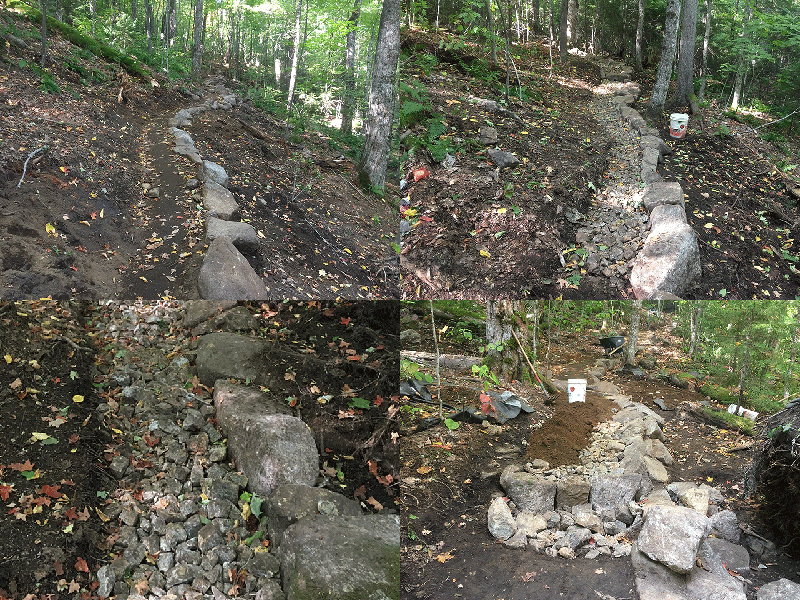
Pictures of new sustainable trails built to Wilderness standards on the re-route of Cascade Mountain and the new trail up Mt. Va of Hoevenberg in the High Peaks Wilderness.
These hiking trails are built to protect the natural resources and wild character of a Wilderness area. They are built with methods and practices that comfort with and uphold Wilderness values. They take a great deal of time and effort, but in addition to protecting Wilderness, they also are built to facilitate high levels of public recreational use. We expect to see the new trail to Mount Van Hoevenberg completed in 2021.
The backlog for trail work in the High Peaks Wilderness at current rates will take more than 100 years to rebuild over 200 miles of trails in the High Peaks and build 100 miles of new trails for trailers peaks. Trail building in the High Peaks Wilderness should be part of a new comprehensive management program that integrates public education, facilities for parking and camping, and scientific monitoring of natural resources and public use impacts. In many ways the sustainable trail is the link that threads through and ties together effective wilderness management.
PROTECT is also working on a pioneering project to research and develop a new Hamilton County Trail Crew that would be dedicated to building and maintaining public trails in the county, mostly on state lands. PROTECT is working in partnership with local governments. The backlog of trail projects throughout Hamilton County is immense. This effort won a SmartGrowth grant in the fall of 2019 to develop an inventory, priority list, and management program for a new Hamilton County Trail Crew that would work directly with the NYS DEC. PROTECT interns conducted trail inventories in the summer of 2020.
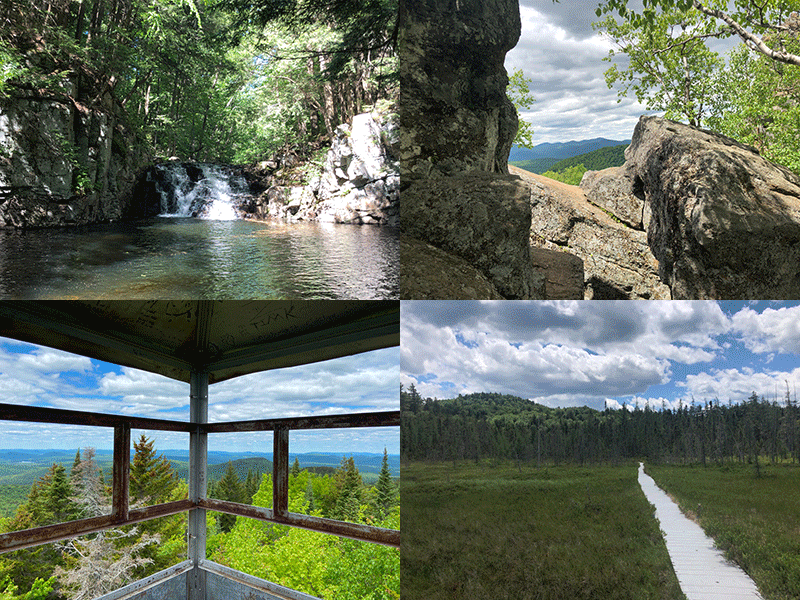
Hamilton County has a variety of trails for hiking. Clockwise from the top left is Tenant Falls, Chimney Mountain, Ferd’s Bog, and Owls Head Mountain.
5. The Adirondack Park Needs More Forest Rangers
Protect the Adirondacks believes it is essential to increase the number of Forest Rangers and other personnel, such as assistant Rangers and backcountry stewards, to respond to the pressures of high public recreational use on the Forest Preserve. Ranger staffing for the entire state is currently around 135 positions. This needs to be expanded to 175 with a special focus on the High Peaks in the Adirondacks.
The Forest Rangers have primary responsibility for DEC’S care, custody and control of five million acres of State-owned land and conservation easements across New York, the vast majority of which is in the Adirondack Park. Today the average Forest Ranger is responsible for patrolling 53,752 acres. In 1970, it was 28,516 acres. There has been a major increase in public use, and the number of search and rescue missions has increased twofold.
We have been advocating for years for more Forest Rangers in New York State, with a special focus on the Adirondacks. We need to boost the numbers of Rangers to ensure that the natural resources are protected and public safety is upheld. We need to make 2021 the year that we get more Rangers.
6. Environmental Rights Constitutional Amendment
In 2021, we’re advocating for 2nd passage of the environmental rights amendment to the New York Constitution. 2nd passage in the State Senate and State Assembly is widely expected, which will ensure that this amendment in placed on the state ballot this fall in November 2021. The measure would add a Section 19 to Article I of the New York Constitution. The following language is for the new section:
Article 1, Section 19 Environmental rights. Each person shall have a right to clean air and water, and a healthful environment.”
PROTECT plans to work with a statewide coalition this summer and fall to advocate for passage of this amendment in November by the voters of New York State.
7. Defending Forever Wild in New York’s Highest Court
The first round of filings by both sides is complete in the lawsuit by Protect the Adirondacks against the New York State Department of Environmental Conservation and Adirondack Park Agency that is now being heard by the New York Court of Appeals, the state’s highest court. Protect the Adirondacks is currently defending a victory at the Appellate Division, Third Department, against an appeal by the state. Each side will get to reply the the other’s briefs in the months ahead. It is expected that the case will be fully briefed by the end of 2020 and that oral arguments at the Court of Appeals will be set at some point in 2021. It is possible that there will be a decision at the end of 2021.
Click here to read the State’s Brief.
Click here to read Protect the Adirondacks’ Brief.
Click here for more background on this important lawsuit.
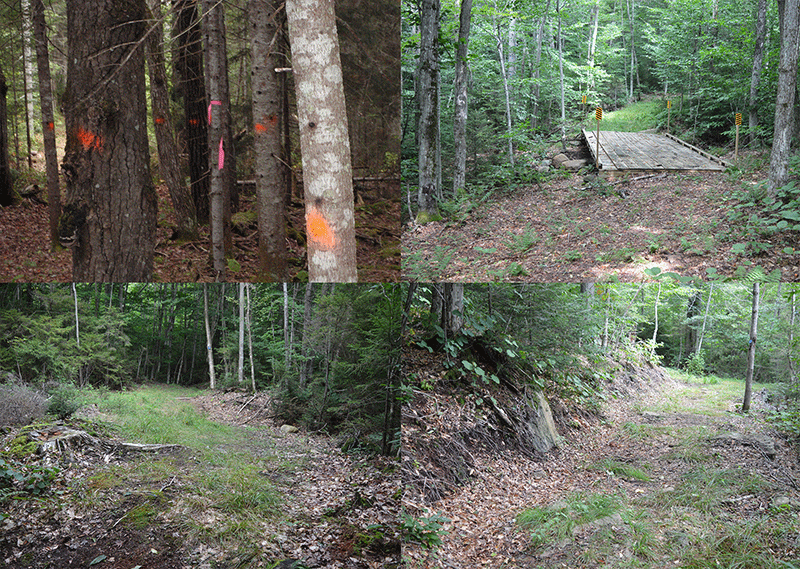
Scenes from wide, road-like Class II snowmobile trails. These trails saw cutting of over 1,000 trees per mile and excavation and grading with heavy equipment. These trails are significantly different from hiking trails.
This lawsuit alleges violations of Article 14 of the New York Constitution, the famed “forever wild” provision, over tree cutting and construction by the state of a network of road-like class II community connector snowmobile trails on the Forest Preserve in the Adirondack Park. Article 14 reads: “The lands of the state, now owned or hereafter acquired, constituting the forest preserve as now fixed by law, shall be forever kept as wild forest lands. They shall not be leased, sold or exchanged, or be taken by any corporation, public or private, nor shall the timber thereon be sold, removed or destroyed.”
Part of PROTECT’s brief states:
In Association for the Protection of the Adirondacks v. MacDonald, 253 N.Y. 234 (1930) this Court articulated multiple criteria that State actions affecting the Forest Preserve must meet to pass constitutional muster. Point III, infra. The Appellate Division, applying one of the two such standards that is at issue herein, properly found that the amount of tree cutting for the Class II Community Connector snowmobile trails (“Class II trails”) was unconstitutional because it destroyed a “substantial” amount of timber, to a “material degree”. R. 5018. In so doing, it accepted the factual findings of the trial court that the Plaintiff’s 3 expert witness’s counts of the number of trees cut, or approved to be cut, were credible (R. xiv), and determined that approximately 25,000 trees would be destroyed by the construction of the trails at issue. Point I, infra.
The Appellate Division also agreed with the factual findings of the trial court (R. xiii), supported by the testimony of Plaintiff’s expert historian, that the framers of Article 14 intended for the word “timber” in Article 14 to refer to trees of all sizes. R. 5017. Point II, infra. When it included trees under 3″ DBH4 in its analysis, the court also relied on the testimony of scientists as to the ecological values of smaller trees.
Click here to read about Article 14 and the word “timber.”
Click here to read about Article 14 and small diameter trees.
8. Building a Diverse and Inclusive Adirondack Park that is Safe and Welcoming for All People
Protect the Adirondacks believes that racism has been and is a toxic element in our country’s past and present. We believe that opposing racism, and encouraging diversity and inclusion, benefit the United States, the State of New York, and the Adirondack Park. We acknowledge that access to American wealth and other resources has been systematically withheld from those identifying as Black, Indigenous, and People of Color (BIPOC).
We believe that the Adirondacks have not always been welcoming to BIPOC and that both historically and recently they have been actively discouraged from enjoying the Adirondack Park.
We believe that all people have an equal right to live, vacation, and recreate in any part of our country, including the Adirondack Park. We commit to promoting diversity, equity, and justice among the year-round residents of the Adirondack Park, among owners of second homes in the Park, among people vacationing in the Park, among those recreating on the Forest Preserve, and among our membership, Board, and staff.
We commit to the following course to develop a strategic plan:
Engagement
- Assemble a list of experts who can help inform and guide Protect the Adirondacks in this work.
- Seek opportunities for anti-racism training for PROTECT’s board, staff, and members.
- Engage with anti-racism efforts of BIPOC in Upstate New York.
- Identify, join, and work with Adirondack anti-racism coalitions, including the Adirondack Diversity Initiative.
Action
- Form a Working Group, open to Board, staff, and members, to compose a comprehensive anti-racism plan.
- Maintain transparent and consistent communication about the findings and trajectory of the Working Group, via a dedicated, publicly-accessible page on our website
The scope of work for Working Group is to analyze the following issues, and to consider other issues not listed:
- Assess PROTECT’s mission and vision statements to determine where anti-racist work and the promotion of diversity and inclusion applies.
- Recommend changes to PROTECT’s Mission and Vision statements to reflect our commitment to diversity, equity, and justice.
- Review the lack of racial diversity on the Board, among staff, and among members and establish a plan for addressing PROTECTs historic homogeneity.
- Review organization bylaws and assess any need for amendment.
- Recommend ways to create a program for a summer-intern program to recruit a diverse pool of applicants.
- Ensure that images used in PROTECT’s publications and website represent a culturally diverse population.
- Draft a comprehensive plan to guide PROTECTs continuing commitment to fostering diversity, equity, and justice in our organization and in the Adirondack Park.
This effort remains a work in progress that will be updated and strengthened throughout 2021.
9. Vital Research to Inform and Help Drive Improved Policies
 The Adirondack Lake Assessment Program (ALAP) was established in 1998 to provide water quality to shoreowners and to develop a comprehensive, long-term database of water quality conditions in the Adirondack Park. 2021 marks the 24th year of the program. ALAP is the largest volunteer-driven water quality monitoring program in the Adirondack Park, and is a partnership between Protect the Adirondacks and the Paul Smith’s College Adirondack Watershed Institute (AWI), along with more than 200 volunteers across the Adirondacks.
The Adirondack Lake Assessment Program (ALAP) was established in 1998 to provide water quality to shoreowners and to develop a comprehensive, long-term database of water quality conditions in the Adirondack Park. 2021 marks the 24th year of the program. ALAP is the largest volunteer-driven water quality monitoring program in the Adirondack Park, and is a partnership between Protect the Adirondacks and the Paul Smith’s College Adirondack Watershed Institute (AWI), along with more than 200 volunteers across the Adirondacks.
Over the past 24 years, ALAP has grown into one of the best long-term citizen science programs of its kind in New York and the eastern U.S.
Click here for more information about ALAP.
10. Comprehensive Adirondack Park Boat Control Program Needed in 2021 to Stop Spread of Aquatic Invasive Species
Protect the Adirondacks is advocating in 2021 for a mandatory boat inspection and decontamination program for the Adirondack Park. The Adirondacks is the last remaining area in New York State with a high number of lakes and ponds that are free of harmful aquatic invasive species.
In 2014, PROTECT helped pass a new law in New York that made it illegal to transport aquatic invasive species. The law required that all boats must be clean, drained and dry before they can be launched in a waterbody in the state. This law expired in 2019 and was renewed for one year. Legislative leaders want to strengthen this law in 2021 and so do we.
Despite the new transport law, lakes and ponds in the Adirondack Park have continued to see new infestations. In 2018, Fishhook waterflea was found in Lake Champlain. In 2016, Spiny waterflea was found in Indian Lake. Eurasian watermilfoil has been recently found in Eagle Lake outside of Ticonderoga and Square Pond. Variable leaf milfoil has been found in Franklin Falls Reservoir and Peck Lake.
In 2018, over 191,000 boaters across New York were surveyed by lake stewards who performed over 98,000 inspections. They found over 9.4% of boats had vegetation on them, and 3.7% (over 3,600 boats) carried aquatic invasive species. In 2019, over 205,000 boaters were surveyed and over 100,000 boats were inspected. Nearly 6% had vegetation on them, with 2.68% carrying aquatic invasive species (over 2,600 boats). Protect the Adirondacks will continue to press for a mandatory boat control law for the Adirondack Park.
In 2021, we need to build a comprehensive system across the Adirondacks for mandatory boat inspections, decontamination stations, and public education to protect Adirondack waters.
11. It’s Time to Amend the APA Act and Pass Conservation Development Legislation
Protect the Adirondacks is pushing for an amendment to the Adirondack Park Agency (APA) Act to preserve the ecological integrity, wildlife and open space in the Adirondack Park in 2021. The bill, sponsored by Assembly Environmental Conservation Committee Chair Steven Englebright and Senate Environmental Conservation Committee Chair Todd Kaminsky would strengthen the Adirondack Park Land Use and Development Plan, originally adopted as part of the APA Act in 1973, by incorporating modern conservation design principles to curtail widely scattered exurban development, or “rural sprawl,” in the Adirondack Park. The APA Act has been largely unchanged since 1973.
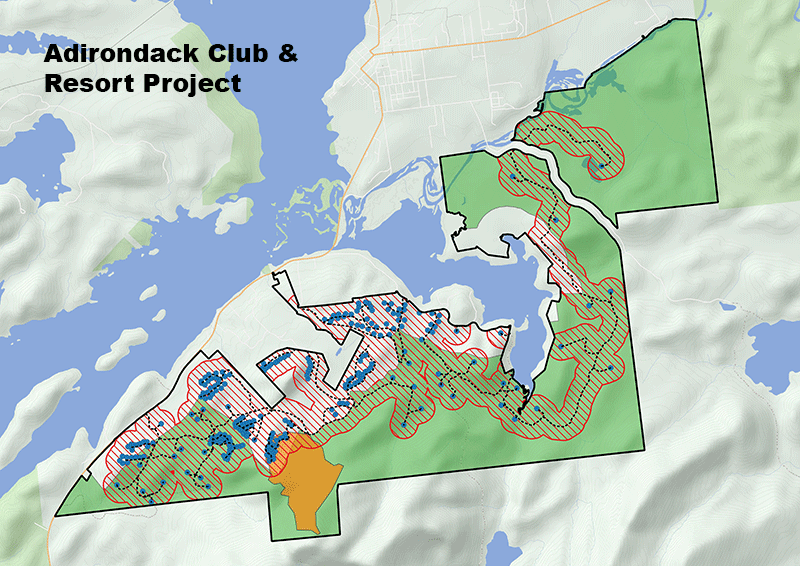
This map shows the 6,000-acre Adirondack Club and Resort project in Tupper Lake, Franklin County. Under the APA approval, the 4,805 acres of Resource Management lands in the ACR project (dark green areas) would see 35 “Great Camps” and 45 single family residences. This map shows a 200-meter ecological impact zone analysis of the project that found that 1,803 acres of Resource Management, some 37.5%, would experience long-term negative impacts from development from roads, houses and utilities. All told, over 46% of the total tract will be negatively impacted by development.
Conservation science now recognizes that the spatial pattern of development is fully as ecologically important as its density. Rural sprawl impairs ecosystem function, decreases biotic integrity, alters species behavior and composition, increases human-wildlife conflicts, and undermines the open space character of the Adirondack Park. The greatest threat to the forest products industry in New York is fragmentation of the forest resource into smaller lots and subdivisions because smaller lots will not be actively managed for commercial logging.
This bill would require that these factors be identified and considered for major, large-scale residential subdivisions in Low Intensity, Rural Use and Resource Management areas. The importance of this bill cannot be overstated. It would provide the APA with scientific tools necessary to review and evaluate proposals for large-scale residential development in the most vulnerable areas of the Adirondack Park. Click here for more information on the need for conservation design legislation.
12. The Adirondack Park Agency Needs New Leadership and an Overhaul of the its Failing Board
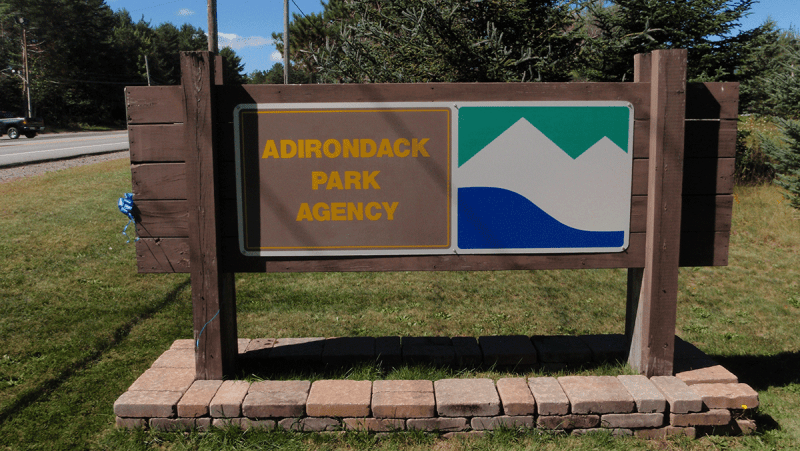
The Adirondack Park Agency (APA) needs reform and changes must start at the top with the APA Board. The APA Board is comprised of 11 members. Eight are nominated by the Governor and confirmed by the State Senate. Three represent state agencies, including the Department of Environmental Conservation, Department of State, and Empire State Development Corp. Of the eight board members confirmed by the State Senate, five must be permanent residents of the Adirondack Park and three must be permanent residents of areas outside the Adirondacks. No more than five Board members can be from one political party and the Governor selects the Chair. Board terms are 4 years long and the terms are set in statute with two terms expiring each year. APA Board members have regularly served in expired terms.
Protect the Adirondacks is advocating in 2021 that members of the APA Board bring a range of professional experiences and undertake their duties with independence. It’s vital the APA Board include people with expertise in environmental law, science and regional planning. Over the last 10 years, the Agency has failed to carry out any meaningful long range or comprehensive planning, which has hampered effective management of High Peaks Wilderness overcrowding, forest fragmentation and forest health, and the protection of water quality. In December, the APA Board was rocked by the resignation of Dr. Chad Dawson, retired professor from SUNY-ESF and nationally regarded expert on public lands management. Dawson resigned out of frustration with the lack of effective planning, inadequate analyses of problems and alternatives, and cited pre-ordained decision-making by the Cuomo Administration that undermined the effectiveness of citizen Board members. Click here to listen to an interview with Dawson on the Capital Pressoom.
Dawson has described this moment for the Agency as a crisis. In addition to filling Dawson’s seat, two additional seats expire on June 30th of this year. You have an opportunity to strengthen and diversify the Adirondack Park Agency board with as many as three new appointments. The APA is charged by state law to be an independent agency with regulatory oversight and long-range planning for the Adirondack Park.
The APA board needs collective professional experience in environmental law, land use planning and ecological science. We will provide the Governor and the State Senate with the names of several highly qualified and knowledgeable individuals who are ready and willing to serve on the APA.
13. Online Hiking Trail Guides to Disperse Crowds Out of the High Peaks Wilderness
This year, PROTECT will continue to promote hiking opportunities outside of the heavily used High Peaks Wilderness area. These hikes, from all corners of the Adirondacks, offer hikers great rewards from stunning views and experiences in different terrains that showcase the vastness and diversity of the Adirondack landscape. These online trail guides include descriptions, trail directions, pictures, and maps that detail the hike and provide information about protecting the natural resources and wild areas of the public Forest Preserve and Adirondack Park and how to be prepared for a good hike by practicing “Leave No Trace” hiking etiquette. Go out and hike and enjoy many different mountains, ponds, waterfalls and bogs that are off the beaten track. These hikes to lead mountain peaks, waterfalls, bogs, remote lakes and ponds, and swimming areas.
Click here to visit our online hiking guide.
We ended 2020 by publishing over 50 hikes and we’ll shortly have 100 online guides published that detail terrific opportunities for great hikes to beautiful destinations all over the Adirondack Park.
14. Bringing the Spirit and Law of the Climate Leadership and Community Protection Act to the Adirondack Park
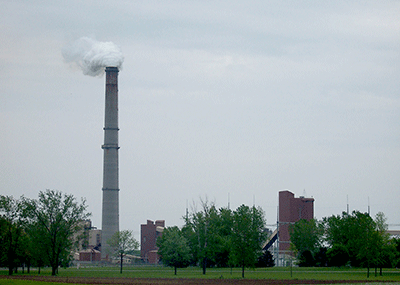 The ecological impacts of climate change are evident across the Adirondack Park. In 2019, New York State, lead by Assemblymember Steven Englebright and Senator Todd Kaminsky, passed the Climate Leadership and Community Protection Act.
The ecological impacts of climate change are evident across the Adirondack Park. In 2019, New York State, lead by Assemblymember Steven Englebright and Senator Todd Kaminsky, passed the Climate Leadership and Community Protection Act.
One aspect off this legislation is directives to state agencies that climate change mitigation and awareness are vital factors that must shape the work of state agencies. This directive has widespread impacts in the Adirondacks, which is in the midst of a boom of recreational housing, which are often second and third homes, and in motorized recreation utilizing low fuel efficient vehicles.
In 2021, Protect the Adirondacks plans to bring the letter and spirit of the Climate Leadership and Community Protection Act (CLCPA) to the management and communities of the Adirondack Park. The Adirondack Park Agency and Department of Environmental Conservation have not detailed how they comply with the goals of the CLCPA in their work for Forest Preserve and conservation easement management or in the regulation of private land development.
15. We Stopped Storage of Used Oil Tankers, Now Lets Build the 55-Mile-Long Hudson River Bike Trail
Protect the Adirondacks played a major role in efforts to beat back a terrible idea to store dirty oil tanker railcars in remote parts of the Adirondack Park, including long stretches of railroads that pass through the Forest Preserve. In 2017, over 100 oil tankers were brought to the Adirondacks for indefinite storage and they were removed in 2018.
PROTECT is now working to organize plans to convert the 55-mile rail line that runs from North Creek to Saratoga Springs into a new Hudson River Bike Trail. This would be a tremendous asset for the region. From bases in Saratoga Springs or North Creek, bicyclists, runners and walkers, among other users, would enjoy a stunning trip with long unbroken sections at the north end. In the summer there are more than a dozen places to swim. In winter months, the trail would be available for cross-country skiing, snowmobiling and fat bike riding on snow.
Click here to read more about this tremendous opportunity to build a new public multi-use trail in the southern Adirondacks. Click here to read a letter making the case for conversion to Governor Cuomo.
16. Advocacy for Community Development and Strategic Long-term Investments in Rural Adirondacks
In 2019, Protect the Adirondacks released The Adirondack Park and Rural America: Economic and Population Trends 1970-2010. This report dispelled longstanding complaints that environmental protections have hampered population and economic growth in the Adirondacks by comparing the Adirondack experience with trends across Rural America. This report has been widely heralded and showed how the challenges facing the Adirondacks are not unique, rather they are the challenges of Rural America. For far too long in the Adirondack Park there has been a misdiagnosis of the region’s economic and demographic trends, which have blamed environmental protections instead of seeing the protected and wild landscape as the region’s key economic asset and building block.
The data and analysis of this report make it clear that it is time to stop blaming whatever economic distress we find in the Adirondack Park on environmental protection, either in purchase of land for the Forest Preserve or conservation easement, or through limiting development on private land. We need to stop blaming the Park. The Adirondack Park and its residents and businesses are part of Rural America and subject to all the population and economic pressures experienced by similar regions throughout the United States. Adirondack economic and population trends are fully consistent with the experience of other rural areas across the U.S. What is special about the Adirondack Park is the world-class protected landscape of mountains, forests, lakes and rivers. The abundant, protected natural resources are a key asset and advantage for the region and sets the Adirondack Park apart from most other rural areas. Click here to read more about this landmark report.
The future for Adirondack communities lies in building social amenities that are connected to our abundant and accessible natural resources. There is no new technology or app that will render our forests, lakes, and mountains obsolete. The Forest Preserve cannot be picked up and moved to China. The Forest Preserve can’t be closed and shuttered. The public amenities throughout our communities and public lands are the economic cornerstones for our region. Public funding should be made to projects that build or enhance community amenities or fund private business development that are tied to these amenities. In 2020, Protect the Adirondacks will work to try and focus community and economic development on building the ecological, social and cultural amenities of the Adirondack Park. In 2021, PROTECT will engage in an array of community development activities.
In 2021, PROTECT will continue to make the case for community Development that embraces the protected landscape of the Adirondack Park.
17. We’re Counting Building Permits for a Major Update of “Growth in the Adirondacks” Report to Assess Development Trends
In 2001, PROTECT published the landmark report Growth in the Adirondack Park on building trends from 1990-1999. This report documented the amount of new development in the Adirondacks and examined the levels regulated by both local governments and the Adirondack Park Agency (APA). In 2020 we’re updating this report. The new report will examine growth rates, patterns and impacts from both 1973 forward, with the advent of regional private land use regulation in the Adirondack Park, as well as provide a detailed analysis of development impacts over 30 years from 1990-2019.
This report will compare development regulated by local governments and that regulated by state agencies. There has been zero work on tracking large-scale residential development in the Adirondacks since the 2001 report. This information is vital for land use planners, local governments, and all concerned about the future of the Adirondack Park.
18. Advocating to Protect Adirondack Drinking Water and Lakes from Road Salt Pollution
The highlight of the 2020 legislative session for the Adirondacks was passage of legislation to create an Adirondack Road Salt Reduction Task Force and Pilot Program. The new law established a salt-reduction pilot program through 2024 to test alternative measures already shown to work better and cost less than current winter road maintenance practices. Highway safety would remain the top priority.
New York State has applied millions of tons of road salt to the park’s highways since it began using salt in 1980. The Adirondack Park contains more than 11,000 lakes and ponds, and more than 30,000 miles of rivers, brook and streams. It is the source of most of the state’s major rivers.
The park’s hard bedrock, thin soils and steep slopes make it the place where road salt damage – like acid rain damage — is likely to appear first and cause the most harm. Lessons learned in the Adirondacks can be applied statewide in the years ahead, Janeway said.
The bill was passed in honor of the late Randy Preston, who served as Wilmington Town Supervisor until his untimely death from brain cancer one year ago. Preston helped to rally local government support for protecting the park’s drinking water, lakes and rivers from road salt.
In addition to damaging cars and roadways, road salt corrodes bridges and parking structures. Repair, maintenance and replacement of road infrastructure corroded by road salt costs are estimated to cost $18,563 per land-mile per year. Repair, maintenance and depreciation of motor vehicles from road salt corrosion amounts to an estimated $3,416 per lane-mile per year. As salt leaches into groundwater, it is making streams saltier in the summer and is releasing heavy metals and other toxins from sources that would otherwise remain harmless, the Watershed Institute’s tests have shown.
The Task Force shall recommend Adirondack state road winter maintenance practices to remediate salt contamination of our surface and ground waters. The Adirondack Road Salt Task Force recommendations for updated levels of service, best management practices, and road salt reduction targets shall guide the Departments of Transportation, Health, and Environmental Conservation in measurably reducing sodium and chloride levels in both surface and ground waters.
Protect the Adirondacks will monitor this work to make sure that this historic opportunity to seized to make progress on the reduction of road salt pollution to the waters and private residences of the Adirondack Park.
19. Make Debar Pond a Fully Protected Motorless Waters Area in the Adirondack Park
There’s an active debate about the future of the dilapidated Debar Lodge, which is on the Debar Mountain Wild Forest Area, in the northern Adirondacks in the Town of Duane in Franklin County. The state wants to tear down the dozen buildings and create a new public day use area with large pavilion, public restrooms, maintenance building and staff on-site. The state has proposed a 41-acre reclassification of Wild Forest Lands to Intensive Use to facilitate this new facility. A private effort wants to amend the State Constitution to obtain all the buildings and six acres of land, removing them from the Forest Preserve, to create a private institute. Protect the Adirondack rejects both of these ideas. Protect the Adirondacks wants to see all of the buildings removed and the site reclaimed and reforested so that Debar Pond is managed as a wild, motorless lake.
As part of the new draft Debar Mountain Complex Unit Management Plan (DMCUMP), which includes the 80,400-acre Debar Mountain Wild Forest Area, the Department of Environmental Conservation (DEC) seeks to reclassify 41 acres of Wild Forest to create a new Debar Pond Intensive Use area. The DEC and Adirondack Park Agency (APA) jointly released a draft Debar Lodge Day Use Area Unit Management Plan (DLDUAUMP) that outlined the state’s plans. This new Intensive Use area would be managed as a day use area, which the state says will be “a hub for recreation access to adjacent lands, a connection to the history of the site, and a recreation destination for the community.”
Protect the Adirondacks does not support an amendment to Article 14, Section 1 to authorize the removal of the Debar Lodge complex from the Forest Preserve so it can be managed as a 6-acre private inholding as some type of commercial and educational facility. We believe that the best long-term use of the Debar Lodge/Debar Pond site is removal of the buildings and restoration of the site to a wild forest setting. Protect the Adirondacks opposes the preferred Intensive Use Area classification and urges the APA and DEC to keep these lands as Wild Forest in order to provide the highest environmental protection possible for Debar Pond and allow the ecological recovery and restoration of the Debar Lodge area. Click here for our public comments on the recent public hearing.
A report published by Protect the Adirondacks in 2013 The Myth of Quiet, Motor-free Waters in the Adirondack Park found that of the 100 largest lakes in the Adirondacks, from Lake Champlain to Beaver Lake (in Watson and Webb in western Adirondacks), 77 are open for all manner of motorized boating and floatplanes, 14 lakes are privately owned and provide no public access, and just 9 are motor-free. Boreas Ponds, which was recently purchased by the State of New York for addition to the Forest Preserve, and is number 95 among the Park’s biggest lakes at 338.9 acres, and was recently added to the motorless list.
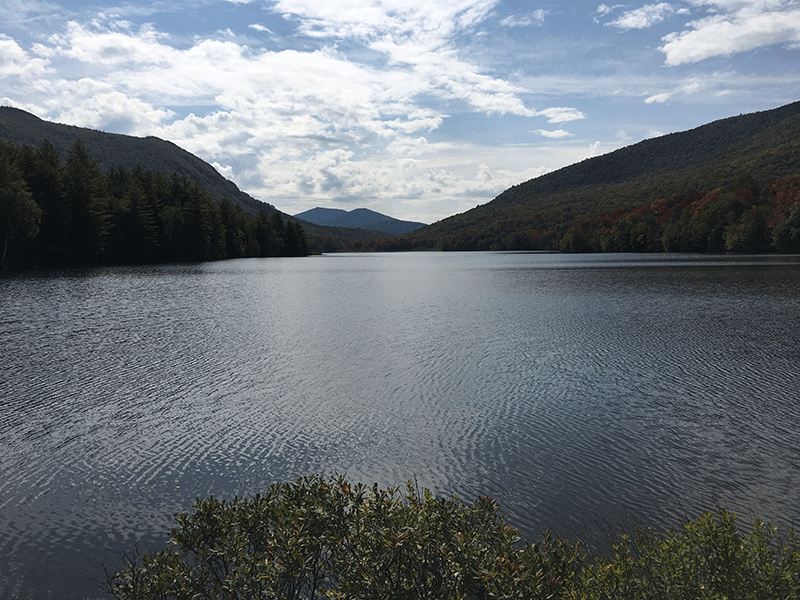
The 86 acre Debar Pond is a gem. This remote pond is currently accessed by a parking that involves a 0.25 mile carry.
Of the nine motor-free lakes among the Park’s top 100, just six are relatively easy to access and motor-free. Just 17 of the biggest 200 lakes are easily accessible and motor-free. In the Adirondack Park’s Forest Preserve, lands designated Wild Forest include over 100,000 more acres than lands designated Wilderness. Wilderness lands should be equal to Wild Forest. For all the reasons detailed in this report there needs to be many more opportunities for easily accessible motor-free waters in the Adirondacks for people to enjoy.
Several dozen canoes and kayaks can be in simultaneous use on a motor-free lake or pond, such as Lake Lila or Round Lake, and the experience remains one of tranquility. Put several dozen motorboats on one such lake and the experience is dominated by the buzz of engines, surge of boat waves, and smell of gasoline.
The demand is high for motor-free experiences, but the supply is low. This needs to change. The public deserves greater opportunities for motor-free waters across the Adirondack Park. In 2021, Protect the Adirondacks is campaigning to keep Debar Pond as a motorless pond that is open and easily accessible for the public., and will be a place that grows wilder ever year.
20. The Adirondack in 2042
In 2042 the Adirondack Park turns 150 years old. That’s just a mere 21 years fro now. What kind of Adirondack Park do you want in the future? Protect the Adirondacks is beginning a process about the steps that need to be taken to ensure that we have a wild and vibrant Adirondack Park in 2042. Please send us your thoughts, ideas and aspirations for the Adirondack Park as to hits 150 years old.
There are many ways to volunteer with Protect the Adirondacks. Click here for membership information.

